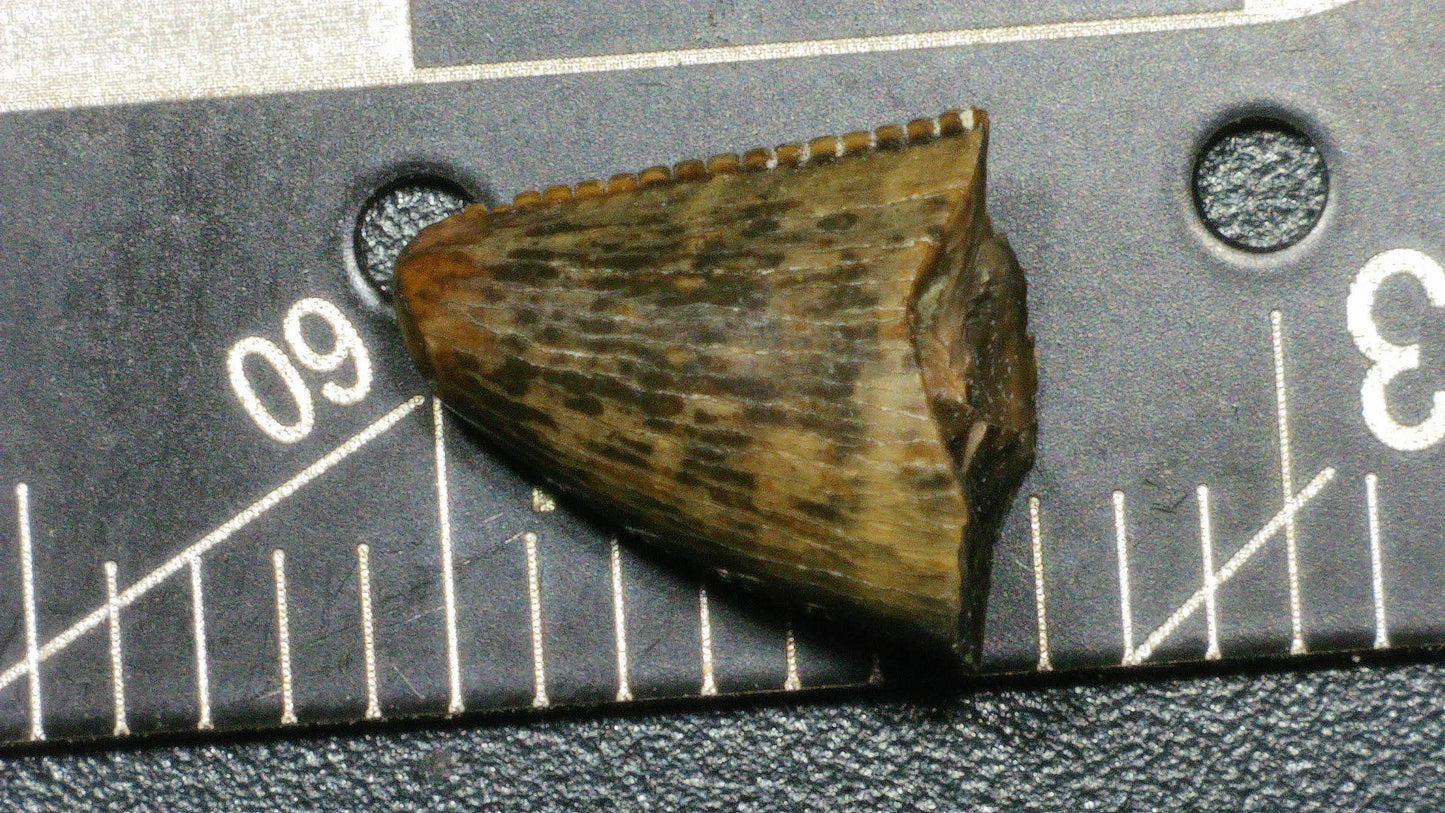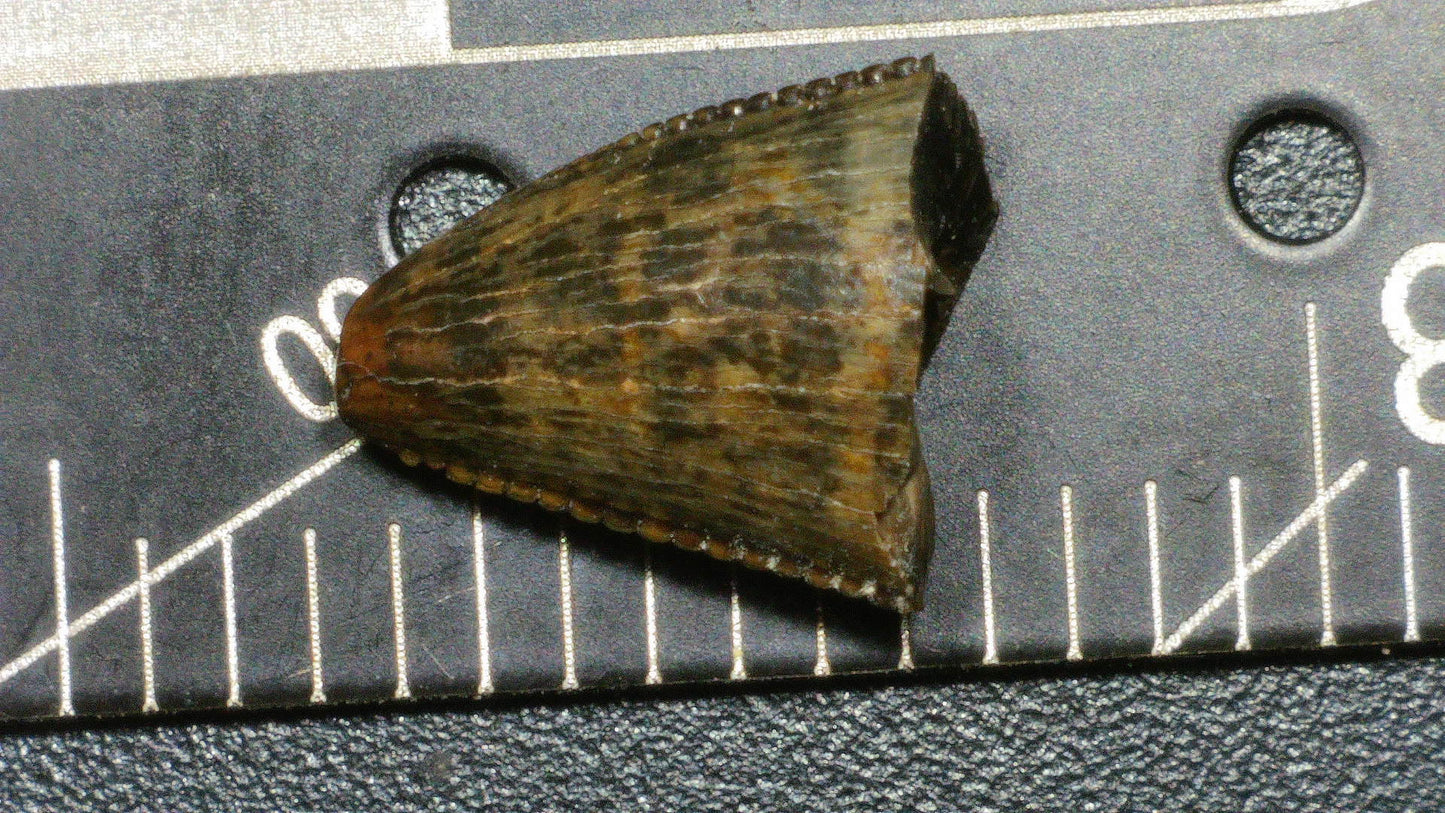Minute Man Fossils
Tyrannosaurid (Teratophoneus?) Tooth Tip-Texas
Tyrannosaurid (Teratophoneus?) Tooth Tip-Texas
Couldn't load pickup availability
Taxa: Tyrannosaurid (Teratophoneus?)
Age: Cretaceous-Campanian
Geology: Aguja formation
Locality: Brewster County, Texas
Tyrannosaurids
Hadrosaurs, commonly known as duck-billed dinosaurs, were a group of herbivorous dinosaurs from the Late Cretaceous period. They are known for their distinctive, flat, duck-like beaks and often elaborate cranial crests, which might have been used for communication or display. Hadrosaurs were part of the family Hadrosauridae and were bipedal and quadrupedal, meaning they could walk on both two and four legs. They had specialized teeth for grinding plant material, indicating a herbivorous diet. Hadrosaurs are notable for their widespread fossil remains, providing significant insights into dinosaur behavior and ecology.
Tyrannosaurids are a family of large, carnivorous theropod dinosaurs that lived during the Late Cretaceous period, roughly 85 to 66 million years ago. They are most famous for including Tyrannosaurus rex, one of the most iconic dinosaurs.
Key Features:
Size: Tyrannosaurids were massive, with some species like T. rex reaching lengths of over 40 feet and weighing up to 10 tons.
Skull and Teeth: They had large, robust skulls with powerful jaws filled with sharp, serrated teeth designed for crushing bone and tearing flesh.
Limbs: While their hind limbs were strong and built for walking or running, their forelimbs were short but muscular, with two clawed fingers.
Tail: They had long, heavy tails that helped balance their large bodies and aided in agility.
Senses: Tyrannosaurids likely had keen senses, particularly excellent vision and a highly developed sense of smell, aiding in hunting and scavenging.
Behavior and Ecology:
Tyrannosaurids were apex predators, preying on large herbivorous dinosaurs like hadrosaurs and ceratopsians. Fossil evidence suggests they may have also scavenged when the opportunity arose. They were widespread across North America and parts of Asia.
Notable Members:
Tyrannosaurus rex: The largest and most famous species.
Albertosaurus: A slightly smaller relative found in Canada.
Daspletosaurus: Known for its close evolutionary ties to T. rex.
Tarbosaurus: A large tyrannosaurid from Asia.
Their combination of size, power, and adaptations made tyrannosaurids some of the most formidable predators of their time.
Aguja formation
The Aguja Formation is a geological formation located in the Big Bend region of West Texas, USA. It dates back to the Late Cretaceous period, approximately 72 to 76 million years ago. The formation is notable for its rich fossil content, particularly dinosaur remains, including various species of hadrosaurs, ceratopsians, and theropods. It primarily consists of sedimentary rock, such as sandstone, mudstone, and shale, indicative of a diverse depositional environment ranging from coastal to fluvial settings. The Aguja Formation provides valuable insights into the ecosystems of North America during the Late Cretaceous.
Share


Subscribe to our emails
Be the first to know about new collections and exclusive offers.


